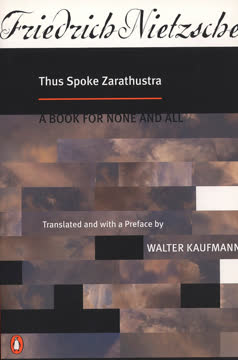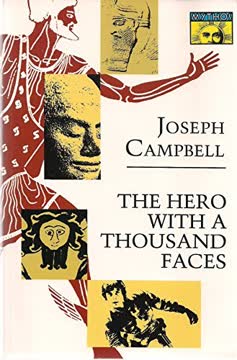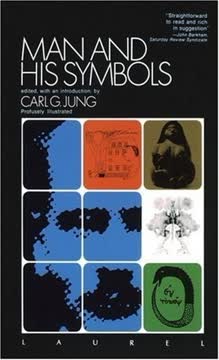重点摘要
1. 梦境是潜意识的语言
通常情况下,任何事件中潜意识的部分都会通过梦境显现出来,而它呈现的形式不是理性的思考,而是象征性的图像。
梦境作为沟通。 梦境并非偶然发生,而是潜意识有意义的表达,揭示那些被意识所掩盖的自我和经历。它将原始的情感和潜在的感知转化为象征性的语言,提供指引和建议。
超越理性思维。 潜意识通过图像和符号进行交流,而非逻辑论证。尽管这些符号常令人困惑,但它们所承载的意义远超理性解释。理解这种象征语言,是开启潜意识智慧的关键。
梦境作为桥梁。 梦境连接着意识与潜意识,提供通往自我理解和个人成长的路径。关注梦境,我们便能获得关于内心世界的丰富信息,更加清醒地应对生活中的挑战。
2. 符号超越意识理解
当一个词语或图像所暗示的意义超出其表面和直接含义时,它便成为象征。
符号作为钥匙。 符号不仅仅是标志或代表,它们蕴含多层意义,超越我们的直接理解。它们触及潜意识,唤起理性难以触及的情感和观念。
普遍与个体。 符号既具有普遍性,反映人类共同的经验和原型,也具有个体性,承载梦者独特的意义。准确解读需把握这两者的互动关系。
超越定义。 符号的真正力量在于激发那些无法精确定义的思想和情感。探索符号时,我们被引向理性之外的概念,拓展对自我和世界的理解。
3. 个体化:走向完整的旅程
当个体化过程完成,意识与潜意识学会和平共处、相辅相成时,人便成为完整、和谐、宁静、富饶且幸福的存在。
内在和谐。 个体化是整合自我意识与潜意识的过程,带来完整、平衡与满足。它关乎成为一个完整且一体化的个体。
终身旅程。 个体化非终点,而是持续一生的自我发现与成长。它要求面对阴影,整合阿尼玛或阿尼姆斯,最终使自我与整体自性相契合。
个体化的益处。 完成个体化带来深刻的内心平和、整合与目标感。它使我们更真实地生活,拥抱全部潜能,以更强的韧性和智慧应对人生挑战。
4. 神话反映普遍原型
弗洛伊德称这些梦境图像为“古老残余”,暗示它们是人类心灵中自远古时代遗存的心理元素。
古老回声。 神话不仅是过去的故事,更是普遍原型的反映——存在于集体潜意识中的先天思维和行为模式。这些原型在梦境、幻想和文化表达中显现。
连接人类。 研究神话让我们洞察人类共同的心理遗产。我们发现跨越时空和文化的反复主题与模式,连接着祖先的智慧。
理解潜意识。 识别梦境和经历中的原型模式,有助于更好地理解潜意识的运作。它为解读象征语言和驾驭人类心灵的复杂性提供框架。
5. 阴影揭示自我隐藏面
西方人在铁幕另一侧所见的,正是他自身邪恶阴影的面孔。
黑暗面。 阴影代表我们人格中被否认或压抑的潜意识部分,常因被视为负面或不可取而被排斥。它包含自我主义、懒惰和破坏性冲动等特质。
投射与整合。 我们常将阴影投射到他人身上,在他们的行为中看到自身的缺点。识别并整合阴影,是自我觉察和成长的关键。
阴影工作的益处。 面对阴影,我们能重新获得被压抑的宝贵品质和能量,带来更真实的自我、更大的同情心,以及对自我和他人更平衡的理解。
6. 阿尼玛与阿尼姆斯:内在引导
换言之,尽管一个人的外在人格看似正常,他可能正隐瞒着——甚至对自己隐瞒着——内心深处“女性”的可悲状态。
内在阴阳。 阿尼玛(男性内在的女性面)和阿尼姆斯(女性内在的男性面)分别代表潜意识中的女性和男性心理成分,影响我们的情感、关系和创造力。
塑造影响。 阿尼玛常受男性与母亲关系的影响,阿尼姆斯则受女性与父亲关系的影响。理解这些影响是整合内在形象的关键。
正负两面。 阿尼玛与阿尼姆斯既有积极面,也有消极面。整合后,它们带来创造力、直觉和对异性的深刻理解;被压抑时,则引发破坏性情绪、固执观点和关系困扰。
7. 自性:心灵的中心
个体是唯一的现实。
存在核心。 自性代表心灵的整体,是整合意识与潜意识的组织中心。它是我们独特潜能的源泉,也是个体化的驱动力。
超越自我。 自性不同于自我,自我只是心灵的一小部分。自我必须学会与自性对齐,方能实现完整,过有意义的生活。
自性的象征。 自性常以整体与统一的图像象征,如曼陀罗、圆圈和宇宙人。这些符号提醒我们与更大存在的联系,以及整合与超越的可能。
8. 艺术是灵魂的镜子
每一个梦都是这一过程的证据。
反映潜意识。 艺术如灵魂之镜,映照个体与社会的潜意识焦虑、渴望和原型模式。通过研究艺术,我们得以洞察集体心灵及时代的挑战。
现代艺术的信息。 现代艺术尤其表达了当代生活的碎片化、疏离感和精神空虚,反映传统价值的丧失与快速变迁中对新意义的追寻。
艺术家的角色。 艺术家是通道,将潜意识的能量转化为具体形态。通过表达这些隐藏力量,艺术家帮助我们面对并整合它们,促进自我觉察与心理疗愈。
9. 失控潜意识的危险
当意识被偏见、错误、幻想和幼稚愿望所左右时,原有的裂痕将扩大为神经症性的分裂,导致远离健康本能、自然与真理的或多或少人为的生活。
潜意识的力量。 潜意识拥有巨大力量,深刻影响我们的思想、情感和行为。若不加控制,可能引发破坏性冲动、扭曲认知和与现实的脱节。
平衡的必要。 维持意识与潜意识的平衡至关重要。压抑潜意识会导致神经症和心理困扰,反之被潜意识淹没则会引发混乱和瓦解。
意识的作用。 意识是引导力量,帮助我们驾驭潜意识的复杂性,健康且建设性地整合其内容。缺乏意识,我们将沦为隐藏冲动和欲望的牺牲品。
10. 个体性的意义
在社会动荡和快速变革的时代,了解个体人类远比我们所知更为重要,因为许多事关其精神与道德品质。
个体的重要性。 在大众社会和集体意识形态盛行的时代,认识个体的价值和重要性尤为关键。每个人都拥有独特潜能,必须促进其成长与发展。
抵抗同化。 个体化要求抵抗社会规范和期望的压力,拥抱独特品质,走自己的道路,真实地生活,即使面临反对。
自知之明的传承。 通过追求自知并遵循内心真理,我们为后代留下真实与启发的遗产,彰显个体塑造命运、推动世界进步的力量。
最后更新日期:
FAQ
What's Man and His Symbols about?
- Exploration of the Unconscious: The book delves into the unconscious mind, focusing on how symbols manifest in dreams and art.
- Role of Symbols: Jung emphasizes the importance of symbols for self-understanding and personal growth, serving as guides to navigate one's psyche.
- Collective Unconscious: Introduces the concept of the collective unconscious, containing archetypes that resonate across cultures and time.
- Integration of Opposites: Discusses the importance of integrating conscious and unconscious aspects for psychological wholeness.
Why should I read Man and His Symbols?
- Accessible Psychology: Jung wrote this book to make his ideas more accessible to the general public, beyond academic psychology.
- Self-Understanding: Offers insights into personal psychological struggles through the exploration of dreams and symbols.
- Cultural Relevance: Connects ancient myths and modern psychology, showing how timeless symbols influence contemporary life and thought.
- Practical Applications: Readers can apply Jung's insights to their own lives, particularly in understanding dreams and personal symbols.
What are the key takeaways of Man and His Symbols?
- Dreams as Guidance: Dreams are meaningful messages from the unconscious, offering guidance and insight into personal issues.
- Individuation Process: Outlines the process of integrating different aspects of the self to achieve a balanced personality.
- Symbolism in Life: Recognizing and understanding symbols can lead to deeper self-awareness and healing.
- Symbols as Guides: Symbols serve as guides to understanding our inner selves and navigating life's challenges.
What are the best quotes from Man and His Symbols and what do they mean?
- “The dream is its own interpretation.”: Dreams should be understood in their own context, not through external definitions.
- “The unconscious is a great guide, friend, and adviser of the conscious.”: Emphasizes the supportive role of the unconscious in self-discovery.
- “Man becomes whole, integrated, calm, fertile, and happy when the process of individuation is complete.”: Achieving balance between the conscious and unconscious leads to a fulfilling life.
- "The anima is responsible for the fact that a man is able to find the right marriage partner.": Highlights the anima's role in guiding men toward meaningful relationships.
How does Jung define symbols in Man and His Symbols?
- Symbols vs. Signs: Symbols carry deeper meanings, while signs merely denote objects or concepts without additional significance.
- Personal and Collective Symbols: Symbols can be personal, arising from individual experiences, or collective, rooted in shared human history and culture.
- Dreams as Symbolic Language: Dreams communicate through symbols, revealing insights about the dreamer's psyche and life circumstances.
What is the process of individuation in Man and His Symbols?
- Integration of the Self: Individuation involves integrating various aspects of the self, including the conscious ego and unconscious elements.
- Role of Archetypes: Archetypes, such as the shadow and anima, play a crucial role in confronting and assimilating hidden aspects.
- Psychological Growth: Leads to greater self-awareness and maturity, allowing individuals to live more authentically and harmoniously.
What role do archetypes play in Man and His Symbols?
- Universal Patterns: Archetypes are universal symbols and themes in the collective unconscious, influencing behavior and thought across cultures.
- Guiding Forces: Serve as guiding forces in the individuation process, helping individuals navigate their inner worlds.
- Cultural Reflection: Manifest in myths, dreams, and cultural narratives, reflecting shared human experiences and psychological truths.
How does Jung address the relationship between the conscious and unconscious mind in Man and His Symbols?
- Interconnectedness: The conscious and unconscious minds are interconnected, with the unconscious influencing conscious thoughts and behaviors.
- Balance and Harmony: Achieving balance between the two is essential for psychological health, as neglecting the unconscious can lead to neurosis.
- Role of Symbols: Symbols act as bridges between the conscious and unconscious, facilitating understanding and integration.
What is the anima and how is it discussed in Man and His Symbols?
- Feminine Aspect of the Male Psyche: The anima represents feminine qualities within a man's psyche, encompassing emotions and intuition.
- Integration for Wholeness: Integrating the anima is crucial for psychological wholeness, allowing men to connect with their emotional selves.
- Symbolic Representation: Often appears in dreams as a female figure, guiding the dreamer toward deeper self-awareness.
How does Jung define the anima and animus in Man and His Symbols?
- Anima as Feminine Aspect: The anima is the feminine element within a man's psyche, manifesting in various forms.
- Animus as Masculine Aspect: The animus represents the masculine aspect within a woman's psyche, influencing thoughts and behaviors.
- Integration is Key: Both must be integrated into the conscious self for psychological balance and maturity.
What role do dreams play in Man and His Symbols?
- Dreams as Communication: Dreams are a primary means through which the unconscious communicates with the conscious mind.
- Collective Images: Often present collective images that provide insight into psychological conflicts and potential for growth.
- Symbolic Interpretation: Understanding dream symbols is crucial for personal development and self-awareness.
How does Jung relate the unconscious to modern science in Man and His Symbols?
- Interconnection of Psyche and Matter: Suggests a relationship between the unconscious and the structure of matter, proposing a unifying principle.
- Synchronicity Concept: Meaningful coincidences illustrate how inner psychic events correspond with outer phenomena.
- Influence on Scientific Thought: Jung's ideas encourage exploration of connections between the unconscious and the natural world.
评论
《人及其象征》探讨了荣格关于原型、梦境与集体无意识的理论。读者普遍认为此书富有启发性,能够深入揭示人类心理与象征的内涵。许多人欣赏荣格对梦的解读方法及其个体化过程的理念;但也有部分读者批评书中内容显得陈旧且概念模糊。此书被视为理解荣格心理学的重要入门,尽管部分读者觉得其理论复杂且难以掌握。总体而言,读者珍视其对人类心灵及其与神话、艺术和文化联系的深刻探讨。
Similar Books























